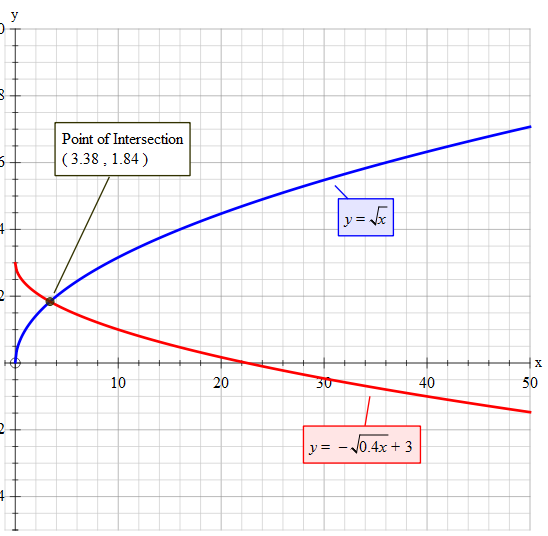How are the graphs #f(x)=sqrtx# and #g(x)=-sqrt(0.4x)+3# related?
1 Answer
See explanation
Explanation:
Consider these points individually
~~~~~~~~~~~~~~~~~~~~~~~~~~~~~~~~~~~~~~~~~~~~
The multiply by
by
In other words it changes the horizontal scale of the plot
~~~~~~~~~~~~~~~~~~~~~~~~~~~~~~~~~~~~~~~~~~~~~~~~~
This raises the
~~~~~~~~~~~~~~~~~~~~~~~~~~~~~~~~~~~~~~~~~~~~~~~~~~~~
For this condition it would reflect
However we have lifted the whole thing by the addition of 3 so it will in fact be reflected (rotated) about a line parallel to the x-axis.
~~~~~~~~~~~~~~~~~~~~~~~~~~~~~~~~~~~~~~~~~~~~~~~~~~~~
If we did not have the + 3 it would be the x-axis. However, by adding 3 we have effectively lifted the line of reflection as well as the graphed line by 3.
Thus as this is not a
~~~~~~~~~~~~~~~~~~~~~~~~~~~~~~~~~~~~~~~~~~~~~~~~~~
Equate
Changed my mind about how to resolve this.
Write as:
Substitute the value of

Notice that the curve near the y axis of the inverted plot (red) is visibly compressed when compared to the other plot (blue). The other point differences are harder to observe but they are there.

